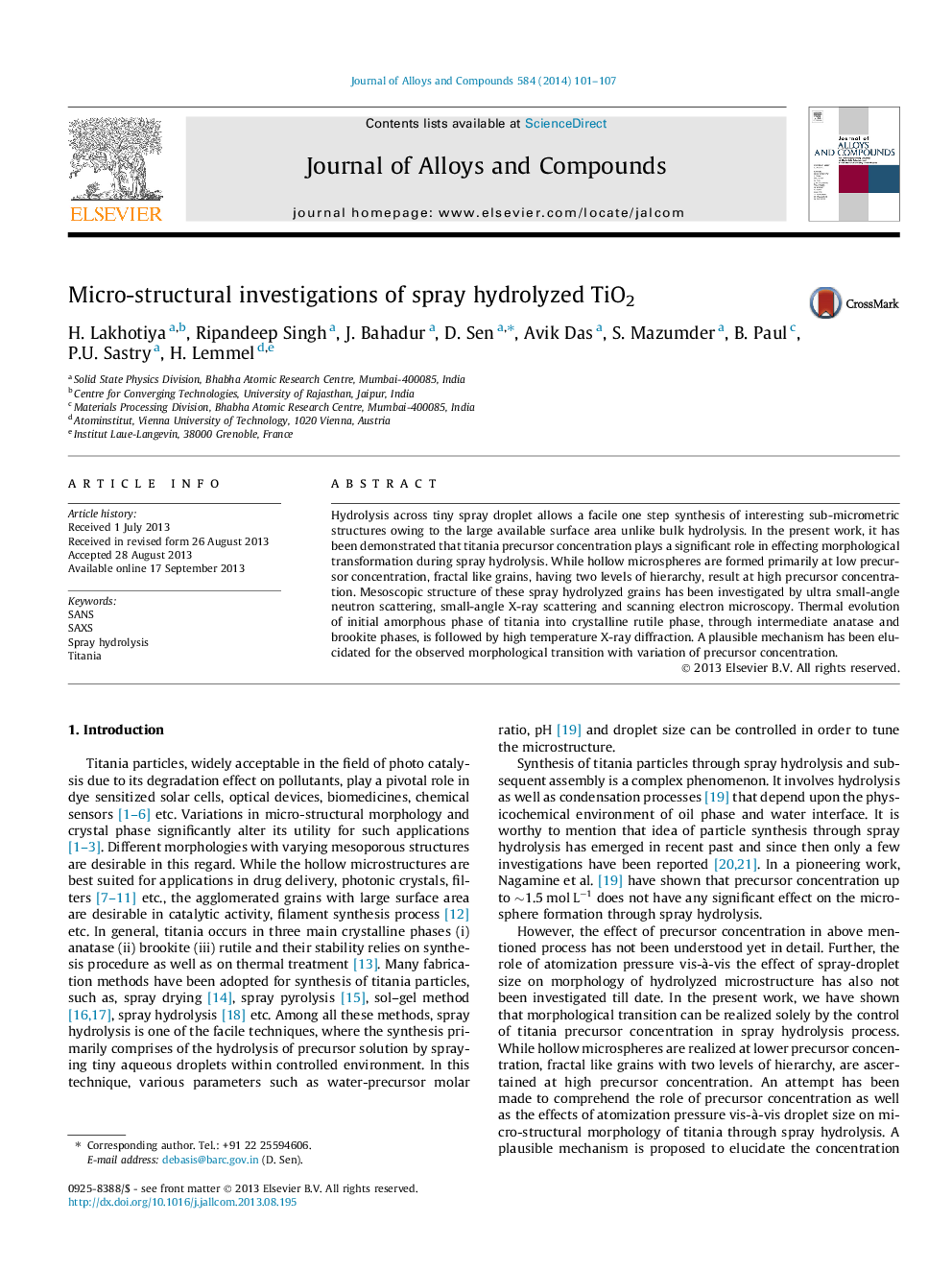| Article ID | Journal | Published Year | Pages | File Type |
|---|---|---|---|---|
| 1612388 | Journal of Alloys and Compounds | 2014 | 7 Pages |
•Titania microstructure formation by spray hydrolysis.•Morphological transition during spray hydrolysis process.•Hollow microspheres and fractal like grains depending on precursor concentration.•Use of scattering and microscopy techniques in probing mesoscopic structures.•A plausible mechanism regarding the morphological transition is also introduced.
Hydrolysis across tiny spray droplet allows a facile one step synthesis of interesting sub-micrometric structures owing to the large available surface area unlike bulk hydrolysis. In the present work, it has been demonstrated that titania precursor concentration plays a significant role in effecting morphological transformation during spray hydrolysis. While hollow microspheres are formed primarily at low precursor concentration, fractal like grains, having two levels of hierarchy, result at high precursor concentration. Mesoscopic structure of these spray hydrolyzed grains has been investigated by ultra small-angle neutron scattering, small-angle X-ray scattering and scanning electron microscopy. Thermal evolution of initial amorphous phase of titania into crystalline rutile phase, through intermediate anatase and brookite phases, is followed by high temperature X-ray diffraction. A plausible mechanism has been elucidated for the observed morphological transition with variation of precursor concentration.
